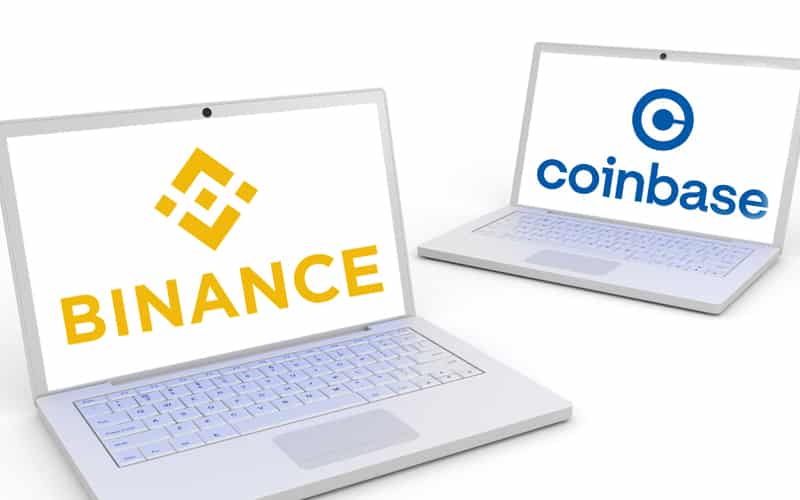Coinbase was among the first crypto exchanges to go to market, having been launched in 2012 by founders Fred Ehrsam and Brian Armstrong. It is based in the US, and users can trade a selection of the most popular cryptocurrencies known to man on it. Their app is easy to use, and it accepts bank payments as well as credit and debit cards.
Binance was launched in 2017 in China by Changpeng Zhao. Since then, it’s moved to the Cayman Islands to enable it to operate in a relatively unregulated environment. Though it is the newer platform, it has managed to position itself as the largest exchange globally by volume, and it is accessible in over 180 countries around the globe. In the US, however, it operates as a separate entity dubbed Binance US in a bid to meet regulatory requirements by the SEC.
About Coinbase
1. Ease of use
Of the two platforms, Coinbase has a much friendlier user interface. The sign-up process is easy, as it only requires filling the sign-up form and verifying your identity with a government ID. The trading process on their app is pretty straightforward, and one can easily find relevant information such as crypto prices and volumes. It is also easy to swap a cryptocurrency for another on the platform.
Additionally, the platform offers several educational features, and they also reward users who view their tutorials with free cryptocurrencies. They also have a newsfeed section that notifies users of any developments affecting the crypto markets. One can also set up notifications and alerts to help track cryptocurrencies on the platform.
2. Pricing
Coinbase has an expensive pricing structure, which makes it suited for long-term investors only who want to purchase and hold crypto. It charges 0.5% for any trades amounting to less than $10,000, with subsidized fees for trades above that amount. If you purchase crypto via bank transfer, you’ll be charged 1.49% of the value of your purchase. If you use a credit or debit card instead, you’ll be charged 3.99%.
3. Features
Coinbase, seeing as its based in the US, strictly complies with regulatory requirements set by the SEC. To that end, it only offers around 50 of the most popular cryptocurrencies for trade on the platform. For most mainstream investors, this offering is more than enough as they will seldom be looking to invest in smaller, upcoming coins.
It is no secret that the crypto market is rife with fraudsters. Statistically, roughly one in every three new coins launched is usually a scam. Such scams are designed to defraud investors by offering a non-existent product, such as the recent Squid Game crypto coin, Squid. Coinbase remedies this by offering only those assets that have been vetted, and it strictly enforces the know your customer (KYC) protocols to detect fraudsters.
4. Security
Coinbase has the better security measures of the two platforms. It offers a built-in hot wallet with a 12-word seed phrase coupled with two-factor authentication. The exchange also stores 98% of all their clients’ holdings in cold storage to protect the funds from hackers. They also offer a vault, which can be set to require time-locked approvals from multiple users before making a withdrawal. What’s more, Coinbase offers FDIC insurance of US dollar deposits for deposit amounts up to $250,000.
About Binance
1. Crypto offerings
Binance offers more than 500 cryptocurrencies, including most up-and-coming projects. This is because being based in the Cayman Islands means they do not have to comply with strict KYC protocols, thus they can easily add new assets to their platform.
Theoretically, this exposes investors to more undervalued and emerging coins which they can exploit for profit. However, the US subsection of Binance, Binance US, offers around 50 cryptocurrencies, which is more at par with Coinbase’s offerings.
In as much as the variety of crypto coins on offer on Binance could present profit-making opportunities for investors, it also carries with it some risk. This is because legitimate assets are listed side by side with fraudulent projects, which can defraud investors of millions of dollars.
2. Advanced toolkit
Binance allows its users to customize advanced chart structures and indicators using their embedded TradingView charts. They also make their API keys publicly accessible, which enables third-party apps to be easily linked to the Binance platform.
On this platform, users can access a wide variety of sophisticated data points, as well as execute far more complicated trades than is possible on Coinbase. This makes Binance the more suitable platform for advanced traders, as the sophistication tends to sacrifice the platform’s ease of use.
3. Pricing
Binance is the cheaper platform, as transaction fees are capped at 0.1%. Purchases via bank transfer are charged at 0.1%, while purchases made via credit/debit cards are charged at 2.1%.
4. Security
Binance does not have its own hot wallet, but it partners with Trust Wallet, a leader in the crypto wallets space. This wallet offers biometric security, an alphanumeric PIN as well as a 12-word recovery seed phrase. On Binance, it is also possible to whitelist addresses that are allowed to withdraw your crypto assets. This way, no other address can access your funds.
Binance also offers two-factor authentication via SMS or Google Authenticator. Further, if you wish to transact large amounts on the platform, you will be subjected to an advanced identity verification process to prevent fraud. What’s more, you can view all the devices that have accessed your account, and block any that you don’t recognize.
Conclusion
Binance and Coinbase are both market leaders in the crypto exchange space. They have several similarities as well as differences. For beginner traders, Coinbase is the better platform due to its friendly interface, easy learning curve, and its breadth of educational resources. For more advanced traders, Binance may offer suitable features such as customizable charts and compatibility with third-party apps. For US residents, Binance US may have limited features, so Coinbase would be the better choice. All in all, the choice between the two platforms boils down to an investor’s individual needs.



